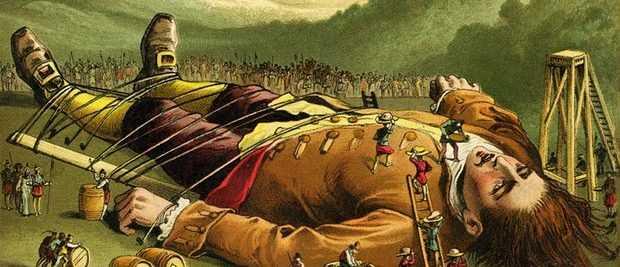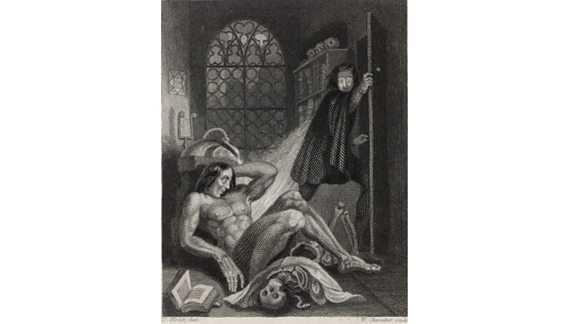Writing the future: A timeline of science fiction literature
Curated from: bbc.co.uk
Ideas, facts & insights covering these topics:
7 ideas
·1.57K reads
14
Explore the World's Best Ideas
Join today and uncover 100+ curated journeys from 50+ topics. Unlock access to our mobile app with extensive features.
Science fiction in the 1700s
Science fiction emerged about 300 years ago when science made great strides. Authors tried to understand their world by imagining a possible future.
Gulliver's Travels is the earliest science fiction. This satirical 1726 travel narrative is considered to be a precursor of the modern science fiction novel. Lemuel Gulliver encounters utopian and dystopian societies during his voyages. The novel describes scientists on islands whose experiments are pointless.
47
392 reads
1800s Science Fiction
- 1818: Mary Shelley's Frankenstein tells the story of Victor Frankenstein, who engineers a living creature in a hideous experiment. The novel is seen as a warning against the expansion of science without a moral context.
- 1870: Jules Verne's tale of Twenty Thousand Leagues Under the Sea is about the undersea adventures on the Nautilus. Verne imagined diving apparatus and a submarine.
- 1895: HG Wells' The Time Machine is about time travel. It fuses science journalism with popular romance.
46
246 reads
Early 1900s Science Fiction
- 1921: Yevgeny Zamyatin writes We after the Bolshevik Revolution of 1917. The story is set in a dystopian society where people are numbered and live in glass buildings to allow them to be watched by the state.
- 1926: Hugo Gernsback launches a pulp magazine and calls its fiction "Scientifiction", which blended romance, vision, and scientific knowledge. In 1929, Gernsback coins "science fiction" in his magazine.
- 1932: Aldous Huxley writes in Brave New World about a dystopian world where genetic engineering becomes the norm and where science has eliminated unhappiness.
44
192 reads
1950s Science Fiction
- 1949: George Orwell wrote Nineteen Eighty-Four during the Cold War. The book is set in a future Britain where the government monitors all private and public activity.
- 1950: I, Robot is a collection of short stories written by American author and biochemist Isaac Asimov. He focuses on the future role of robots in society and also introduces his Three Laws of Robotics.
- 1951: John Wyndham's The Day of the Triffids is a tale of giant sentient plants. It is about a hero's efforts to survive in a broken society.
44
236 reads
1960s Science Fiction
- 1962: JG Ballard's The Drowned World is the first of his novels dealing with ecocatastrophes. He deals with the idea of societal breakdown after the polar ice caps have melted.
- 1968: The futuristic novels of Philip K Dick provide the storyline for many modern sci-fi movies such as Blade Runner. Do Androids Dream of Electric Sheep? is considering what makes a person human.
- 1969: Author Ursula K Le Guin's The Left Hand of Darkness examines gender. Her characters are androgynous, taking on male or female characteristics every month.
44
161 reads
1970s Science Fiction
- 1974: Doris Lessing published a tale of post-apocalyptic societal breakdown in the novel Memoirs of a Survivor.
- 1975: Academic and feminist Joanna Russ wrote The Female Man. She describes a positive community of women. The four main characters live in parallel worlds in different historical times and spaces.
- 1979: Douglas Adams's series, The Hitchhiker's Guide to the Galaxy, is a parody of life across the Universe.
39
182 reads
1980s and 1990s Science Fiction
- 1984: William Gibson blurs the boundary between human and machine in Neuromancer. Gibson's "console cowboys" chase each other through a virtual space known as the "matrix". Gibson coined the term "cyberspace" and is known for his prophetic visions of technology.
- 1987: Octavia E Bulter wrote Dawn as part of a Xenogenesis trilogy to explore concepts of reproduction between species, gender and sexuality.
- 1993: Kim Stanley Robinson's Mars trilogy is about the colonisation of Mars as an analogy to the western expansion of the USA.
38
170 reads
IDEAS CURATED BY
Brooklyn Z.'s ideas are part of this journey:
Learn more about communication with this collection
Proper running form
Tips for staying motivated
Importance of rest and recovery
Related collections
Similar ideas
Read & Learn
20x Faster
without
deepstash
with
deepstash
with
deepstash
Personalized microlearning
—
100+ Learning Journeys
—
Access to 200,000+ ideas
—
Access to the mobile app
—
Unlimited idea saving
—
—
Unlimited history
—
—
Unlimited listening to ideas
—
—
Downloading & offline access
—
—
Supercharge your mind with one idea per day
Enter your email and spend 1 minute every day to learn something new.
I agree to receive email updates


